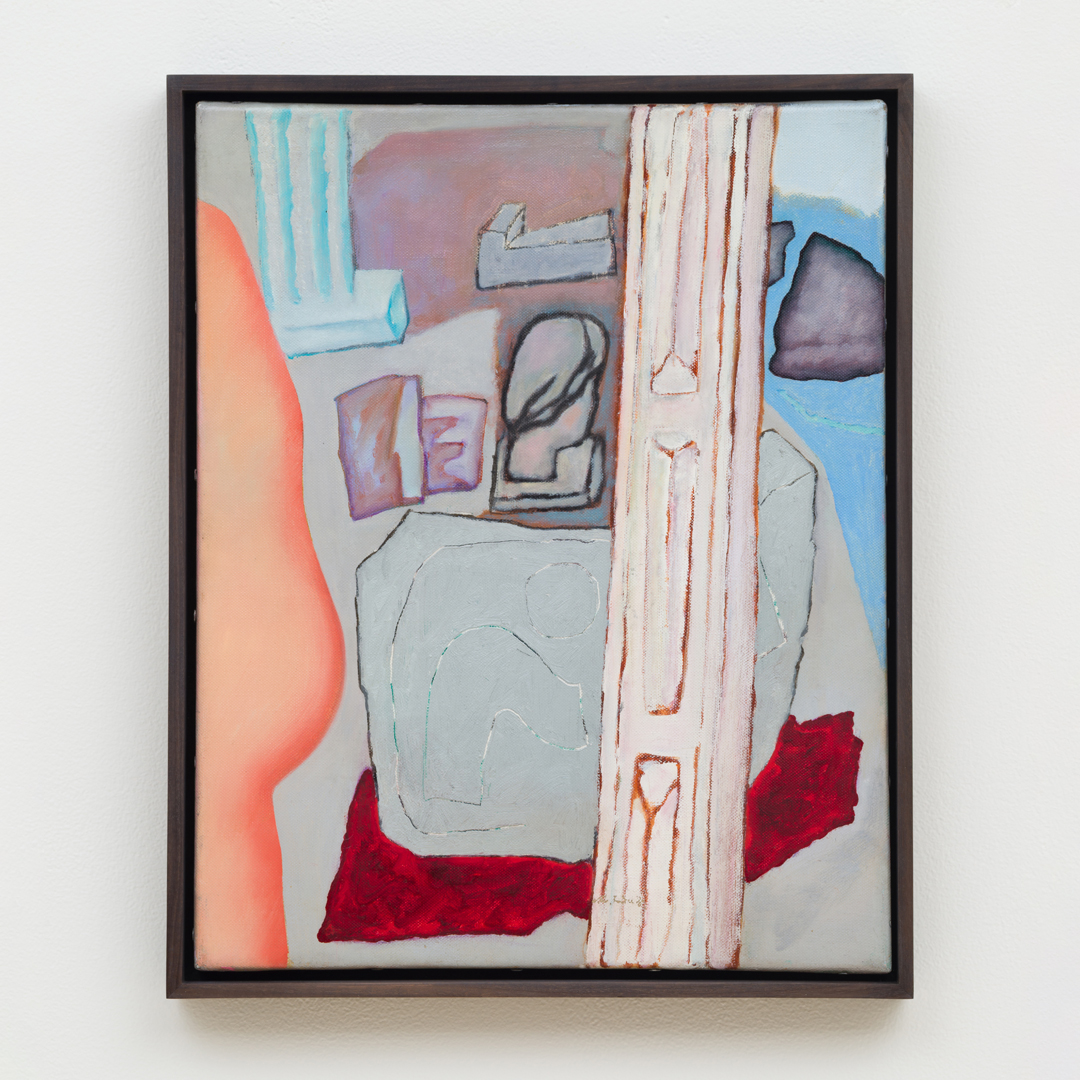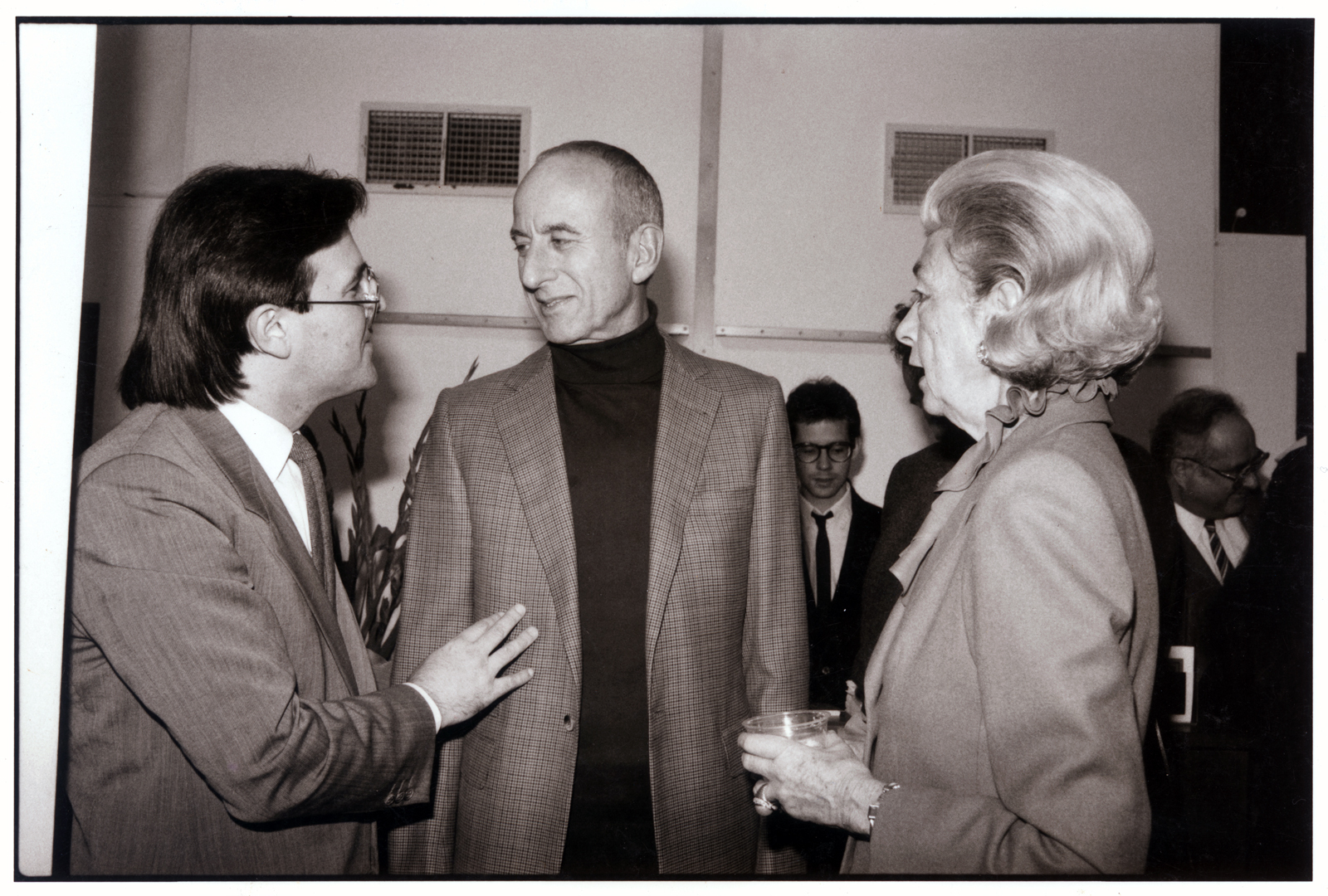
William Brice’s cryptic dreamscape Untitled (1969)—on view now in L.A. Louver Celebrates 50 Years—represents a significant inflection point for the artist, produced just as he was settling into his iconic mature style. Presaging Brice’s transformative first visit to Greece in 1970, the work combines the untouched rock formations, coastal iconography, and dimensional space of his early works with the classical Greek architectural fragments and stylized human form for which he is known. Here, in the foreground, a fleshy, abstracted partial figure stands by a shoreline landscape scattered with offshore boulders, columns, sculptural remnants, stone furniture and a decorated stele. For Brice, these elements—human bodies, natural stone structures, ancient carved fragments—served as connection points between classical civilization, individual perceptual life, broader universal humanity, and the even grander scope of geological time. In Untitled, Brice articulates these disparate pieces in a representational mode that reveals the origins of his later more abstract, pictographic works.
The son of radio and film star Fanny Brice, Willam Brice was a central figure in the avant-garde artistic and cultural milieus of New York and Los Angeles throughout the 20th century. He shared a longstanding personal and professional relationship with the gallery’s founding director, Peter Goulds, starting when the two held concurrent teaching appointments at UCLA in the 1970s. Also on faculty was the artist Richard Diebenkorn, a longtime treasured friend of Brice and Goulds.
Brice’s work was the subject of five solo exhibitions at L.A. Louver between 1984 and 2010 and has been collected by major institutions, including the Hirshhorn Museum, the Los Angeles County Museum of Art, the Hammer Museum, the Art Institute of Chicago, the Whitney Museum of American Art, and the Museum of Modern Art. William Brice also advised his brother-in-law, film producer Ray Stark, on his significant collection of 20th-century art, much of which was generously bequeathed to the Getty Museum.
Today we celebrate William Brice’s life and work on what would have been his 104th birthday.




